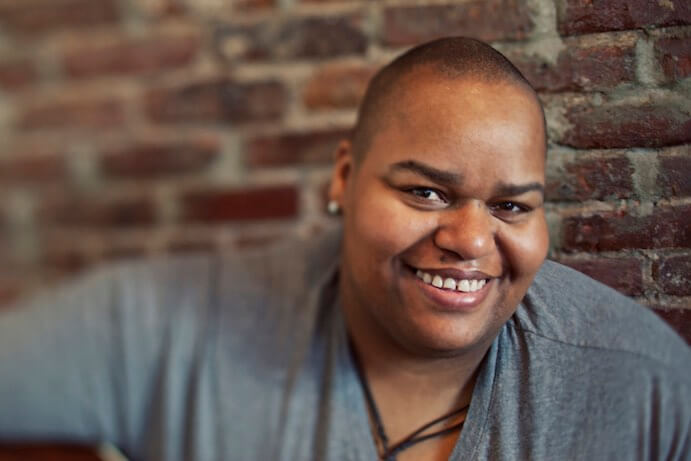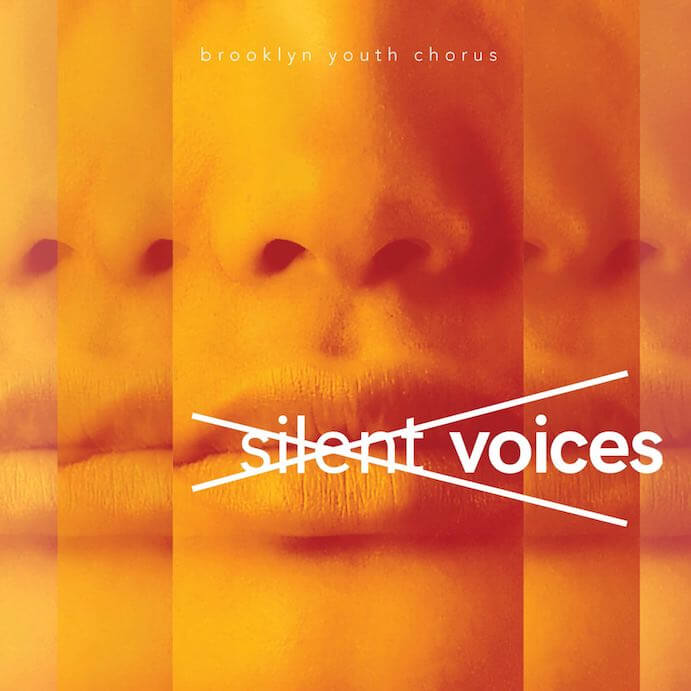Spend an hour and twenty minutes with Silent Voices, the newest release from the Grammy-Award winning Brooklyn Youth Chorus (BYC) on New Amsterdam Records. Their impressive list of collaborators includes Caroline Shaw, Shara Nova, Nico Muhly, Ellis Ludwig-Leone, Mary Kouyoumdjian, Toshi Reagon, Paul D. Miller (aka DJ Spooky), Kamala Sankaram, and Jeff Beal. And (if that list isn’t enough to entice), The Chorus is accompanied throughout the record by the International Contemporary Ensemble (ICE).
Silent Voices is the result of years-long collaboration between the Brooklyn Youth Chorus and composers. The project aims to present multi-media choral works that give the vocalists of BYC a special voice in their own music-making. The record that results is a unique amalgam of new music, pop, blues, and hip-hop that empowers young musicians to act as agents of change.
Since you’re listening, how about a challenge? Listen to Silent Voices all the way through without thinking “. . . for a youth chorus.” As in, “The Brooklyn Youth Chorus displays tremendous musicianship, stylistic sensitivity, and vocal flexibility for a youth chorus.” Or, “On Silent Voices, the Brooklyn Youth Chorus tackles difficult subject matter for a youth chorus.” The truth of Silent Voices is that the Brooklyn Youth Chorus displays tremendous musicianship, stylistic sensitivity, and vocal flexibility while powerfully demanding that listeners confront hard truths about racism, gender roles and discrimination, ageism, the social responsibilities of politics, and displaced populations. Period.

Toshi Reagon–Photo by Erica Beckman
Paul Miller aka DJ Spooky‘s Go Tell It delivers one the record’s most powerful and direct messages. The piece takes excerpts from Michelle Alexander’s The New Jim Crow and weaves hip-hop, gospel solos, and spoken-word delivery in and out of the spiritual Go Tell It on the Mountain. Miller’s piece emphatically states that ours is a caste system that pushes African-Americans to the margins. Toshi Reagon‘s bluesy Brooklyn Bound asks that we understand that same institutional dilemma from the perspective of our own neighbors. BYC brings energetic singing and even shouting to the work’s exploration of a Brooklyn neighborhood that gentrification and technology have destroyed.
Mary Kouyoumdjian‘s I Can Barely Look embraces yet another displaced population by drawing its text from the BYC’s singers’ reactions to the Syrian refugee crisis. There is a sense of ever-present unease that piano, cello, clarinet, and percussion escalate to urgency–and even dread–as the chorus echoes, “I wish I could help / That there was more that I could do / But I can barely look.”
If Kouyoumdjian’s approach is any indication, Artistic Director and conductor Dianne Berkun Menaker has established fruitful relationships between the composers of Silent Voices and the members of BYC. Caroline Shaw‘s own text to so quietly describes the feelings of fear and confusion that might come from speaking out, personally or politically. The piece uses vocables, glissandi, sounding breaths, and chordal undulations to transform confusion into confidence. Shara Nova‘s Blind to the Illness and Let Freedom Ring both grow out of atmospheric beginnings as Nova allows the power of the choir’s sound to blossom while singing text from Martin Luther King Jr. and the Statue of Liberty.
Shara Nova–Photo by Cora Wagoner Photography
Kamala Sankaram‘s Keep the Look Loose winds itself around Claudia Rankine’s poem of the same name, which explores the ways in which cultural pressures negatively impact people’s view of themselves and their bodies. As Sankaram’s piece is sung, BYC executes body-percussive stomp and claps that highlight the poem’s theme while sonically reinforcing the confidence that comes from overcoming “the daily shame given . . . by our culture’s games.”
Much of the Silent Voices requires bright, often poppy singing, and the recording production of the voices is mostly perfectly matched to the style being sung. However, as the musical styles of the record shift toward bel canto, a more forgiving recording space might have added welcome resonance and heightened the singers’ shimmer and crisp diction.
Nico Muhly‘s Advice to Young Women and Ellis Ludwig-Leone‘s Lying in a field, age 67 and Singing in a chorus, age 14 allow the singers’ bel canto colors to shine. Advice to Young Women is simultaneously innocent and rigid with ICE’s exacting rhythmic repetition echoing what Muhly calls an “obsessive, minuscule way of policing women’s behavior.” The choir’s singing is beautifully melodic, even as their lines explore the heights and depths of vocal range.
Dianne Berkun Menaker and Brooklyn Youth Chorus present Silent Voices–Photo by Julienne Schaer
Ludwig-Leone’s two offerings serve as a miniature drama for chorus that explores aging and memory from the perspective of a single character during two stages of life. ICE aids the choir in portraying a trajectory of memory from its initial spark through long melancholic reminiscence. Jeff Beal’s The Firebrand and the First Lady offers an optimistic close to Silent Voices. The chorus sings poetry by Pauli Murray as well as excerpts from her now-famous correspondence with First Lady Eleanor Roosevelt. Beal’s warm orchestration surrounds Murray’s words with hope and gives an encouraging and empowering turn to the end of the record.
Brooklyn Youth Chorus brings their whole selves to making music that is perfected in their performance. The brave programming and weighty subject matter of Silent Voices speak clearly because the composers treat the BYC as an expressive force in its own right, and the chorus is empowered to sing in just that way. The members of the BYC sing for change, and we should look forward to the day they achieve it.

